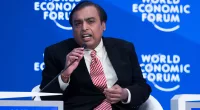Thrasio, which became popular for its then investor-craze model of aggregating and acquiring Amazon sellers, has now filed for Chapter 11 bankruptcy protection in the District of New Jersey. This development comes amidst a backdrop of mounting debt by the firm.
According to an official statement, the firm’s “restructuring support agreement” involves “around 81% of its revolving credit facility lenders and approximately 88% of its term loan lenders,” and Thrasio notes that this will “eliminate approximately $495 million of the Company’s existing debt, defer all interest payments in the first year post-emergence and infuse new capital into the Company.” Additionally, Thrasio secured commitments for up to $90 million in new financing from certain lenders, providing essential liquidity to sustain its operations during the bankruptcy process.
“Over the past year, we have made significant progress transforming the business and advancing our objective to introduce hundreds of brands to millions of customers,” said Greg Greeley, CEO of Thrasio. “We are taking steps to build on this progress by strengthening our financial position and working with our lenders to support our future success. Thrasio is one of the largest third-party sellers on the Amazon marketplace, and with a strengthened balance sheet and new capital, we will be better equipped to support our brands, scale our infrastructure and enable future opportunities.”
Thrasio’s journey began with ambitious aspirations. Capitalizing on the surge in online shopping during the COVID-19 pandemic, the company adopted a unique “roll-up” model. By acquiring promising third-party sellers on Amazon, Thrasio aimed to consolidate their operations, leverage economies of scale, and optimize their performance. This strategy proved successful initially, attracting significant investor interest. Thrasio amassed over $3 billion in funding, propelling its rapid growth and solidifying its position as a major player in the Amazon marketplace. According to documents filed with the court, its assets are estimated to be in the range of $1-10 billion, while estimated liabilities are expected to be in the range of $500 million to $1 billion.
However, Thrasio’s success story was not without its challenges. The company’s rapid expansion was fueled, in part, by a substantial debt burden. The exact amount of debt remains unclear, with Thrasio’s bankruptcy filing only indicating a range of liabilities between $500 million and $1 billion. This significant debt load, coupled with rising interest rates, placed a significant financial strain on the company. Furthermore, Thrasio’s fortunes became increasingly intertwined with the broader e-commerce landscape. The pandemic-driven surge in online shopping that fueled the company’s initial success began to moderate as restrictions eased and consumer behavior shifted back towards brick-and-mortar retailers.
The Tech Portal is published by Blue Box Media Private Limited. Our investors have no influence over our reporting. Read our full Ownership and Funding Disclosure →






